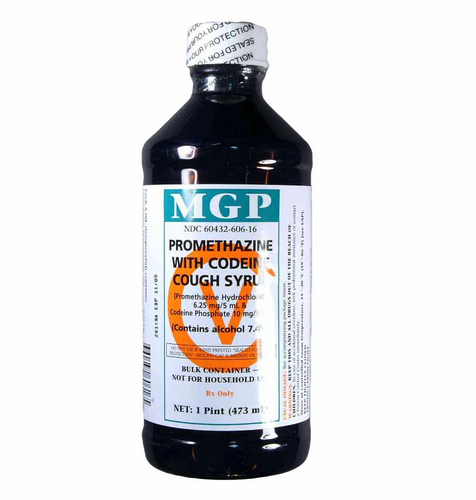|
Name: Codeine preparations - 200 mg/(100 ml or 100 gm)
Type: Opioid
AKA: Cosanyl, Robitussin A-C, Cheracol, Cerose, Pediacof

|
|
II. Natural Derivative

|

|
|
IV. History
Codeine, an opioid used for its analgesic and antitussive effects, has been used since the 19th century. Codeine preparations, such as syrups and tablets, became widely used for pain relief and cough suppression. Its historical significance lies in its role in opioid medications and the evolution of treatments for pain and cough.

|
|
V. Legal Information
Codeine preparations with concentrations of 200 mg per 100 ml or 100 gm are regulated due to codeine's potential for abuse and addiction. In the United States, these preparations are controlled under the Controlled Substances Act. Similar regulations are enforced globally to manage misuse. [Source: UNODC].
US Federal Schedule - V
Schedule V drugs, substances, or chemicals are defined as drugs with lower potential for abuse than Schedule IV and consist of preparations containing limited quantities of certain narcotics. Schedule V drugs are generally used for antidiarrheal, antitussive, and analgesic purposes. Some examples of Schedule V drugs are: cough preparations with less than 200 milligrams of codeine or per 100 milliliters (Robitussin AC), Lomotil, Motofen, Lyrica, Parepectolin.
Key US Federal Policies:
Controlled Substances Act. Public Law: Public Law 91-513 (text can be found on GovInfo) (https://www.dea.gov/drug-information/csa). Date enacted: October 27, 1970.
|
|
VI. Physical Effects
Codeine preparations (200 mg per 100 ml or 100 gm) are used for their analgesic and cough suppressant properties. Short-term use is effective for pain management and cough relief, but long-term use can lead to addiction, tolerance, and health issues. Overdose risks include severe sedation and respiratory depression. Safe use involves following prescribed dosages and monitoring for side effects. Recent research highlights its efficacy and risks associated with prolonged use.  |
|
VII. Psychological Effects
Codeine, an opioid, provides analgesia and euphoria. Short-term effects include mood enhancement and sedation, while chronic use can result in dependence, cognitive decline, and mood disorders. Research emphasizes its effects on opioid receptors and risks associated with long-term use.
 |
|
VIII. Culture
Codeine preparations have a long history of use for their analgesic and antitussive properties. Codeine is derived from the opium poppy and has been used in traditional medicine for centuries. In modern times, it is widely used in cough syrups and pain medications. Cultural significance includes its role in the opioid crisis, with discussions about its potential for abuse and regulation. Proponents emphasize its medical benefits, while opponents highlight the risks of dependency and misuse. Its use is both medicinal and recreational, depending on the context and regulations.
 |
